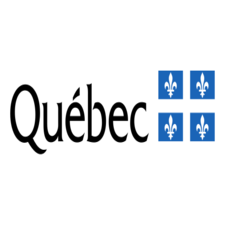Slope class
Type of resources
Topics
Keywords
Contact for the resource
Provided by
Formats
Representation types
Update frequencies
status
-
Matrix of slopes in degrees produced from mosaics of images of digital terrain models from different years according to sectors (2008 to 2020)**This third party metadata element was translated using an automated translation tool (Amazon Translate).**
-

__The link: *Access the data directory* is available in the section*Dataset Description Sheets; Additional Information*__. **Slope classes** express the slope of the terrain in a relatively homogeneous area with a minimum area of 0.5 ha. They are generated from a numerical model that groups terrain slopes into six classes: + 0-3% zero + Low by 4-8% + 9-15% soft + Moderate by 16-30% + 31-40% strong + Steep by 41% or more These data cover almost all of Quebec south of the 52nd parallel. This map is presented in two groups: grouping at the provincial level and grouping at the scale of 1/250,000. Each grouping represents an assembly of sheets produced on a scale of 1/20,000. The datasets were originally produced in 2005 and then updated in 2006. In 2010, they were enhanced with slope information for the northernmost part. No updates have been made since then. __For more information, please refer to the document: [Products presenting the concept of slope] (https://diffusion.mffp.gouv.qc.ca/Diffusion/DonneeGratuite/Foret/DONNEES_FOR_ECO_SUD/Classes_pente/01-Documentation/Produits_presentant_la_notion_de_pente.pdf) __ __ ⚠️ Notes: __ The numerical terrain model is prepared from the level curves and altitude points that come from the topographic map at a scale of 1/20,000 and 1/50,000 from the Quebec Topographic Database (BDTQ). This geographic database was produced in 2010 and has never been updated. __ 🕰️ Former names:__ Numerical slope classes, Slope class **This third party metadata element was translated using an automated translation tool (Amazon Translate).**
-

__The link: *Access the data directory* is available in the section*Dataset Description Sheets; Additional Information*__. The polygonal layer of lidar slope classes expresses the slope of the terrain. The slopes are generated from a digital terrain model (DTM) with a resolution of 10 meters. The latter is the result of an aggregation by bilinear interpolation of lidar NCDs at 1 m. The minimum area of the resulting polygons is 0.2 hectares. Lidar digital slopes are divided into 7 classes. + A - Null by [0 to 3]% + B - Low from] 3 to 8]% + C - Soft from] 8 to 15]% + D - Moderate [from] 15 to 30]% + E - Strong from] 30 to 40]% + F - Steep from] 40 to ∞ [% + S — Summit completely surrounded by F slopes This map covers the entire territory of the Southern Quebec Ecoforest Inventory (IEQM) and was developed in order to provide stakeholders with the tools they need when applying for financial assistance from the Forest Management Investment Program (PIAF). __We do not recommend using the information in this layer for detailed analysis. __**This third party metadata element was translated using an automated translation tool (Amazon Translate).**
 Arctic SDI catalogue
Arctic SDI catalogue
